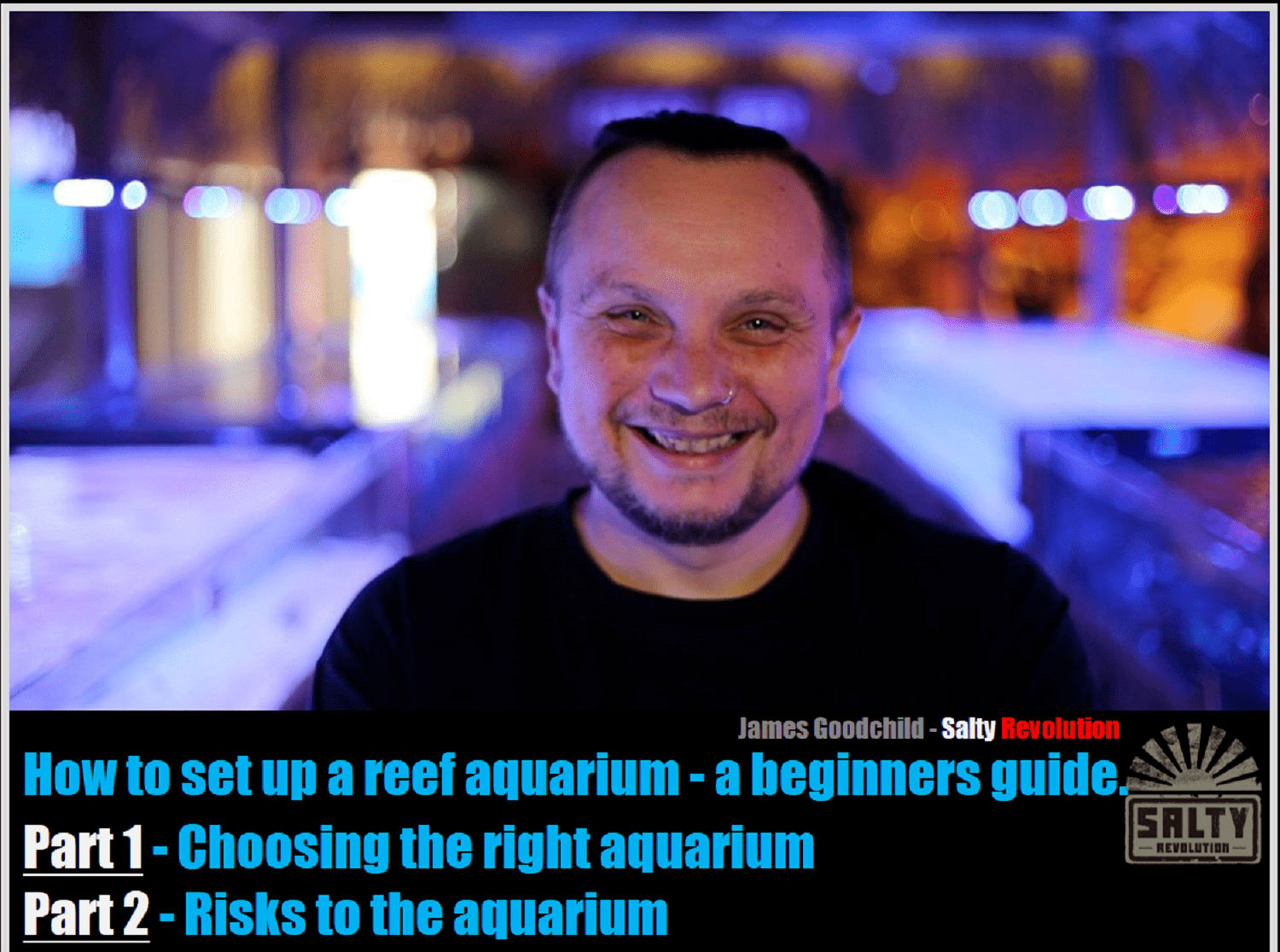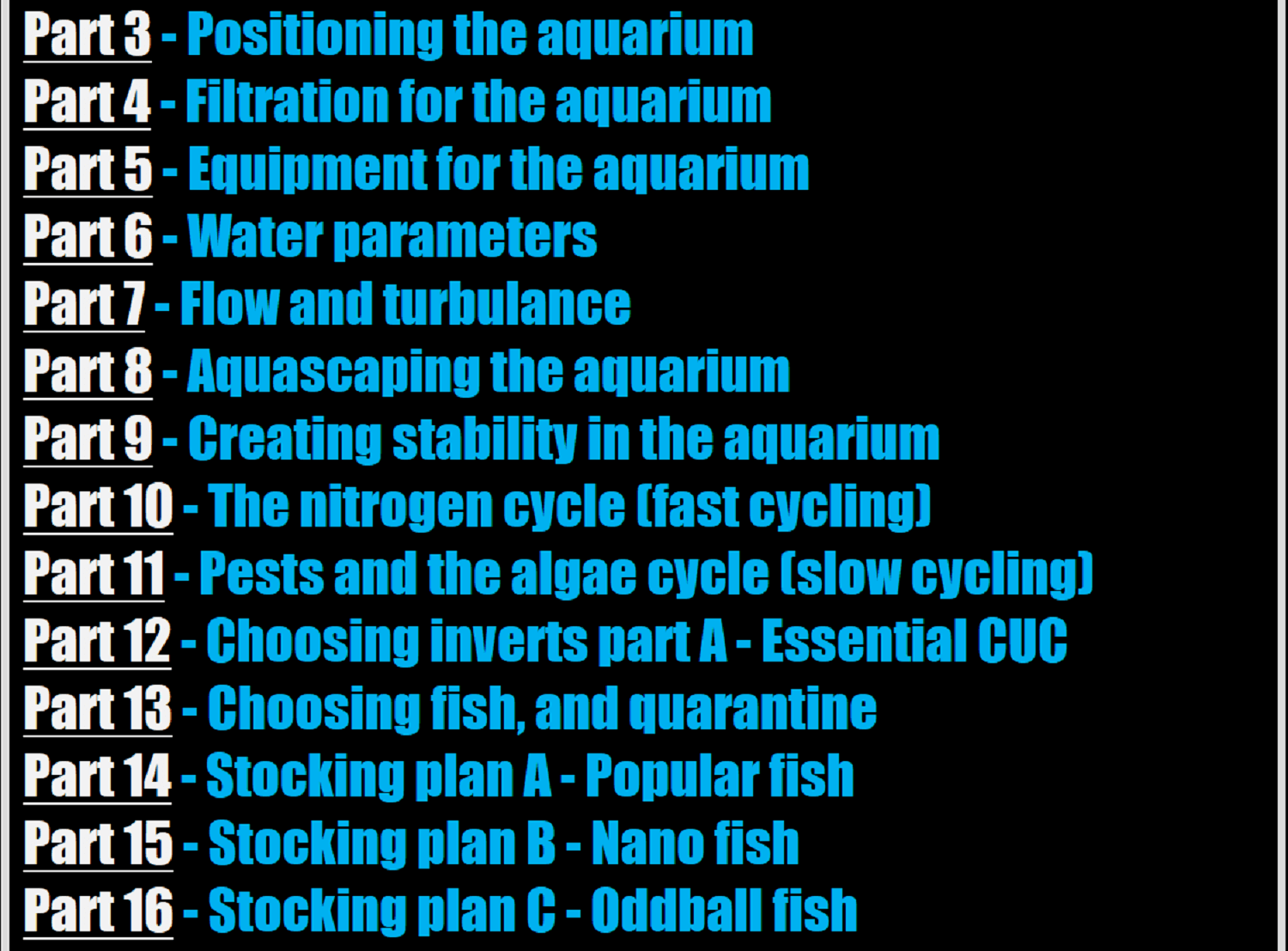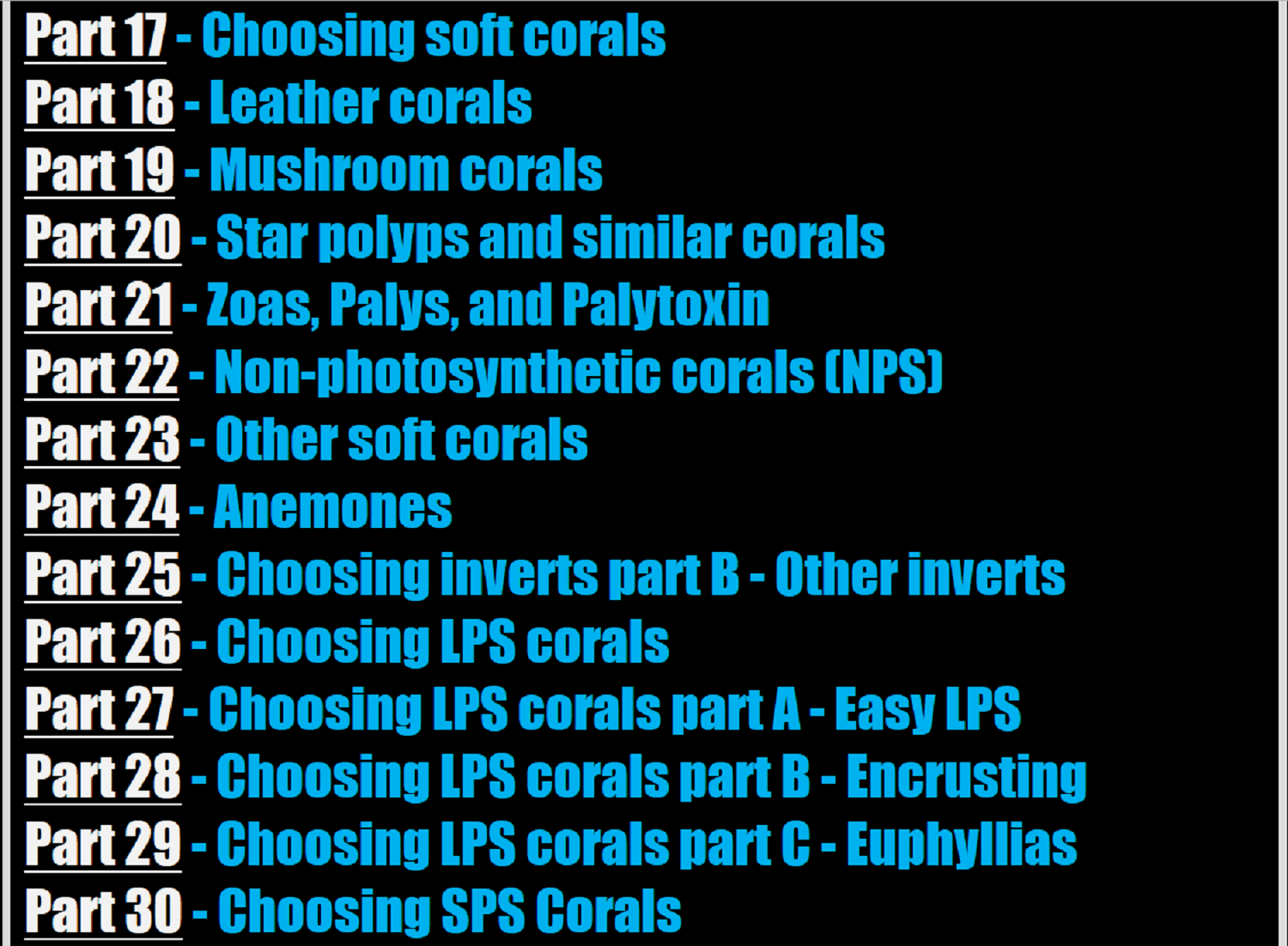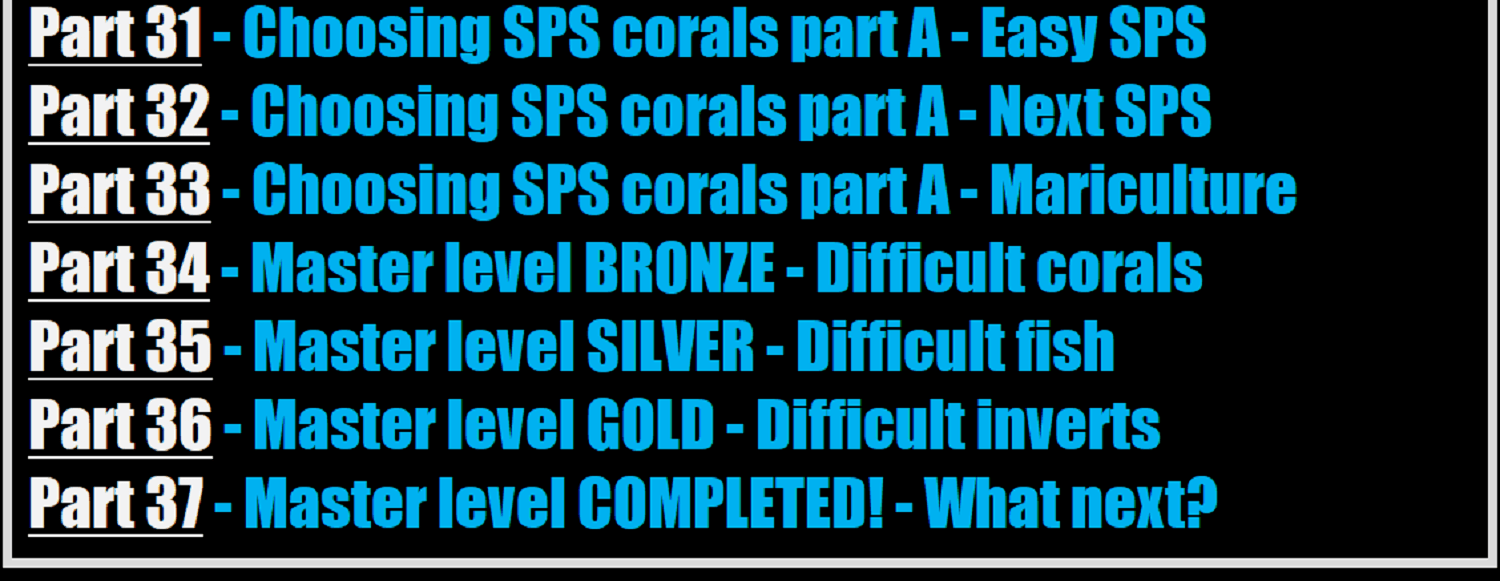How to set up a reef aquarium - PART 4 - Filtration for the aquarium
How to set up a reef aquarium - a beginners guide. PART 4 - Filtration for the aquarium. By james Goodchild at Salty Revolution August 2022.
Introduction to setting up a reef aquarium, by James Goodchild at Salty Revolution.
Sign up to our VIP mailing list below, so you don’t miss out on all this free advice. Our VIP mailing list is free to join, no membership costs, you can unsubscribe anytime you want, we only need your name and the email address you’d like our updates sent to. We don’t share your details with anyone else either. You also get info on new shipments, special VIP first peek options, VIP offers, and even special VIP priority store opening days, etc. You might save yourself a fortune by joining, and if it’s not for you then you can always unsubscribe whenever you want. Although I doubt you’d want to!
PART 4 - Filtration for the aquarium
BASIC ADVICE
Filtration boils down to 3 basic types. Mechanical filtration removes particles from the water. Biological filtration breaks down organic components such as ammonia and nitrite, into the less toxic nitrate and phosphate, and finally processes nitrate into nitrogen gas which then vents off from the aquarium. Chemical filtration uses replaceable media to capture and remove various toxins such as; phosphate, organic dyes, nematocysts, and external contaminants.
We recommend using; filter wool, carbon, phosphate remover, polyfilter, and having a well maintained sand bed of 1” to 1.2” (25mm to 30mm) depth of very fine sugar sized sand (0-1mm).
JAMES SAYS
The key to setting up a reef aquarium using our system is that it is very robust. we rely on using as little equipment as possible. The reason for this is that sooner or later any piece of equipment may suddenly start working less effectively or stop working altogether. By relying on a filtration system that is mostly biological backed up by removable media, it is very simple with little to go wrong. Our system is also designed so that if one part of it stops working, something else should pick up most of the job for you. We don’t use any skimmers or reactors and rely on a low tech system of mechanical, biological, and chemical filtration, with the biology in the tank doing most of the work for you.
So how does our system work? Very simply we use filter floss to as a mechanical filtration, phosphate remover to remove phosphate. carbon to remove organic dyes, nematocysts (stinging cells released by soft corals to wage war on other corals), improve water clarity (vital for ensuring consistent light levels for corals), and external contamination that can enter the water from household products. We then use Polyfilter, an ingenious material that absorbs and locks away dozens of different toxins, and changes colour to show when it is used up. The colour it changes to also shows you what it has absorbed; it will turn yellow-green if it has trapped ammonia, turquoise-blue for copper, red for nitrite, etc. Polyfilter is an absolute life saver and 9/10 if you do get something nasty make it’s way into your aquarium it will save your tank from disaster. It is widely available only, doesn’t cost much, and you’ll probably only need 1 or 2 to keep your tank safe for a whole year. It can also be used in freshwater tanks too.
Caribsea live Bahamas oolite. In our opinion the very best sand available on the market in all our tests of many dozens of different types of sand. Widely available online. Caribsea manufacture a wide variety of sands so choose carefully to make sure you get the correct one.
The most important part of the filtration is the sand bed. Just 1 litre of 0-1mm sand contains the same surface area as a football pitch, and more than 10kg of rock. It is also much easier to keep in good condition than the surface of live rock which can easily be clogged by algae etc. In a typical 250 litre you might have 25kg of live rock, but, the 1”-1.2” depth of 0-1mm sand will have around 30 litres of sand, comparable to 300kg to 450kg of live rock. On average the sand will be doing 90% to 98% of the work, with the effect of the rock being negligible.
The depth of the sand and the grain size is critical. This is why. At the surface of the sand bed the water will contain around 10ppm of oxygen. This is great for the nitrifying bacteria that handle ammonia and nitrite, but, that level of oxygen is toxic to the denitrifying bacteria that handle nitrate and phosphate. As the water slowly percolates down through the sand bed it loses oxygen. On a grain size of 0-1mm at around 1” deep the oxygen level will hit the sweet spot of 1ppm to 2ppm oxygen. It is in this zone the denitrifying bacteria live. They will consume phosphate and nitrate at a ratio of around 1:16, (1ppm phosphate to 16ppm nitrate). If the sand bed is too shallow for this to happen you end up with problems with nitrates.
If you are using a coarser sand such as 1mm to 2mm you need a deeper sand bed to create the sweet spot. At 1mm to 2mm grain size you need roughly 2”-3” deep sand, and with 2mm to 3mm sand it can take 6” or more to reach this sweet spot. However the deeper the sand bed the more risky this becomes. At the deepest levels of the sand bed the oxygen can drop below 1ppm oxygen. At this point the bacteria can start producing all sorts of toxic gases, such as; methane, nitrous oxide, hydrogen sulphide, etc.
In a shallow sand bed any bubbles of toxic gases can easily bubble up through the sand as they form and vent safely from the aquarium. With deeper sand beds the gases cannot escape so easily and may form large pockets of toxic gas. When one of these larger pockets eventually breaks free it can release a lot of toxic gas into the aquarium in one go with disastrous results. For this reason we consider it vital that sand beds are kept to 1” to 1.2” deep (25mm to 30mm), and that the sand is 0mm to 1mm (finer than grains of sugar) to create a safe sweet spot.
The other advantages of use fine sand in the 0-1mm range is that it doesn’t trap detritus as easily. Any waste tends to sit on top rather than get trapped within the sand bed like it does with coarser grain sizes. it is also a better sand for sand sifting and burrowing animals such as; Gobies, Jawfish, Rays, Pistol shrimps, some Sea cucumbers, etc.
One last point on sand only ever use natural sand from the ocean (don’t collect it from the local beach though), don’t ever use so called “Eco sands” which are man made. natural sand has been tumbled by the ocean over and over again and has rounded edges that cannot hurt your animals. Many Eco sands are simply crushed material which has not been tumbled and so contains many sharp edges. These sharp edges can damage many of the animals in your aquarium and I strongly recommend avoiding using any man made Eco sands, and immediately replacing your sand with something better as a matter of urgency.
The best sand I have ever used is Caribsea Live bahama sand. It is widely available online and in every test we have done has out performed all other sands on the market by a mile.
Here is a link to Caribsea’s website:
https://caribsea.com/marine-substrates/
Why no skimmer? A skimmer can be a very useful piece of kit, however they can be fiddly to adjust and sooner or later may end up out of adjustment, blocked, or stop working altogether. If your system is reliant on the skimmer this can be very bad news indeed. However the main reason for not using a skimmer is that a skimmer removes most of the free floating life in the aquarium. All these tiny free floating algae and animals do a useful job in processing nutrients, provide a food source for the corals, and also form the start of the food web providing some natural food for the fish and other small animals in the tank.
What about UV? Contrary to popular belief a UV does nothing really for disease control in a marine aquarium. Marine parasites are simply too large and too tough to be damaged in any significant way by being passed through one, or even several UV units. A UV can be useful for improving water clarity though. In larger tanks (500 litres plus) it can be worth fitting a UV to improve water clarity. On smaller tanks you can add one if you wish. Any benefits on smaller tanks will be negligible, but, they don’t do much harm either. In very new setups you can get a bacterial bloom where the water looks milky white. Bacterial blooms can be very dangerous, and whilst this is rare even on new setups, if it does happen fitting a small UV will solve it. On most aquariums up to 250 litres a simple 4w UV may be powerful enough. UV are best powered by their own separate pump as they need very low flow rates to be effective. Never pump water through faster than the maximum flow rate on the unit, and the nearer the minimum flow rate the better.
That’s all for PART 4, in PART 5 we look at Equipment for the aquarium.
Links
Sign up below so you don’t miss future parts of this series.
Salty Revolution; Facebook, YouTube, Instagram, and email us.
James Goodchild
Salty Revolution





















